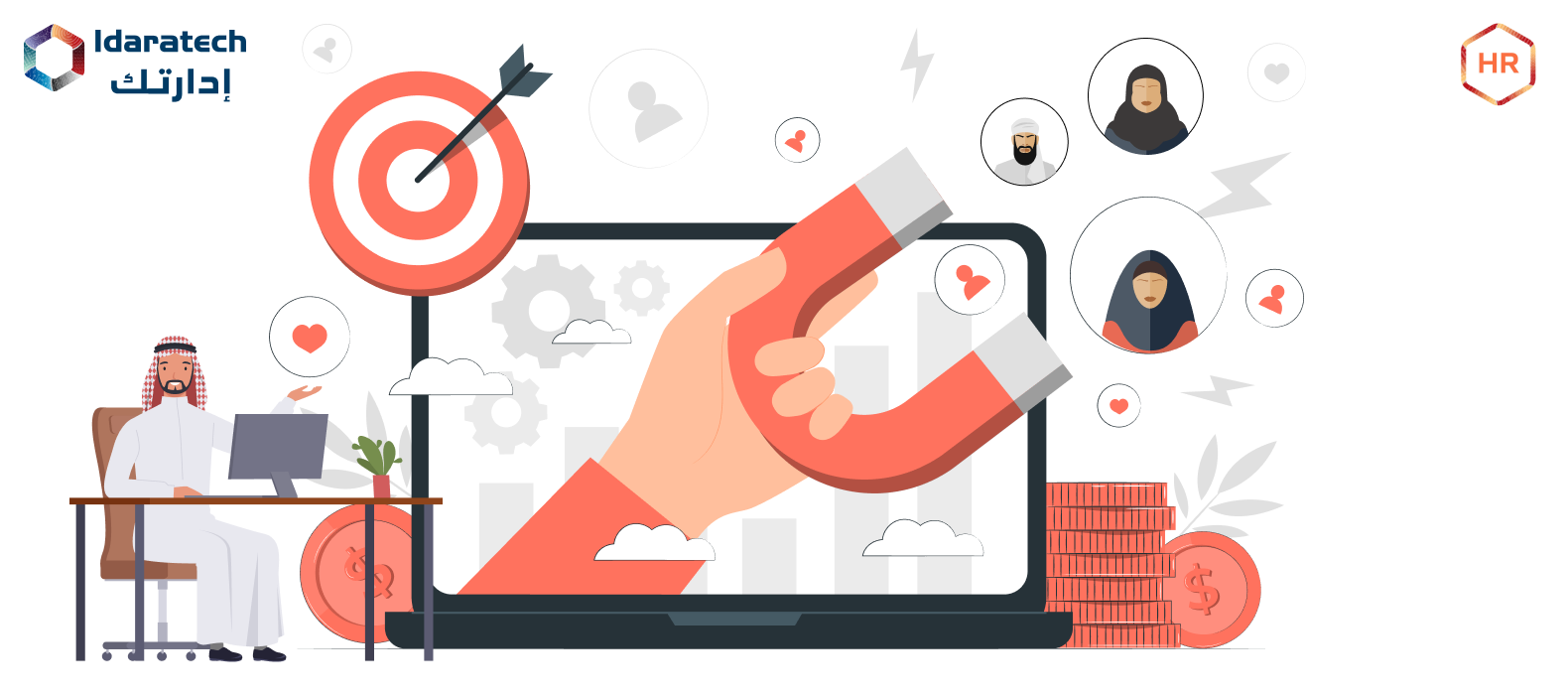Do you have trouble retaining your top employees?
Finding the appropriate talent is a challenging enough task. But keeping them is an entirely different problem. Disengagement is among the earliest warning indicators of an employee about to quit their work. Possessing effective employee retention strategies is the first step in developing a highly engaged workplace.
The time when employers held all the cards is long gone. Employees are no longer obligated to work for organizations that do not benefit them. Understanding employee retention is, therefore, essential if you want to keep those top performers.
Due to the expense of finding, employing, and training a new employee and the necessity for current employees to work overtime until the business can fill the vacant job, over 70% of companies indicate that employee turnover has a negative financial impact.
You can decrease employee turnover and keep the talent you need to run your business by learning these practical employee retention strategies listed below.
But first, let’s introduce what employee retention is.
What is Employee Retention?

Employee Retention is defined as an employer’s attempt to develop a work environment that meets the demand of the current employees so they can stay on board with the business. The major policies and programs for employee retention are designed to address the various needs of employees and maximize their satisfaction.
In other words, employee retention determines how well a company can control employee turnover. The various retention programs encouraged and improved the facts of employee engagement at work.
In addition to paying competitive remuneration, which is an essential strategy that assists in keeping and maintaining the top talent in the workplace for a long period.
Some of the few important factors relating to employee retention are listed below:
Key Takeaways
- Top HR businesses place a significant priority on employee retention today.
- Employers who are aware of the cues that an employee might quit have a better chance of finding solutions to keep that employee.
- As you can retain exceptional individuals over the long term, saving you to save money on hiring and onboarding expenses, which improves the efficiency of the recruitment process.
- Employee Retention policies may directly impact the business revenue. Therefore, revenue can act as a gauge of effective retention strategies.
- Effective employee retention strategies keep top performers on board while reducing overall turnover.
Best Strategies for Employee Retention

How can companies satisfy their employees and discourage them from exploring new opportunities elsewhere? These 10+ employee retention strategies in your organization will put you on the right track!
1. Enhance Employee Onboarding and Orientation:
It’s important to make every new hire successful right away. In addition to the work, your onboarding process should teach new hires about the corporate culture and how they may contribute to and succeed. Pay close attention to this important initial stage. The orientation you give new hires, whether in person or digitally, can set the tone for their employment with your company.
Your onboarding procedure should:
- Ensure the success of your employee
- Describe the culture and norms of the company
- Set clarify expectations
- Explain the rules and regulations
2. Employee Well-being:
True wealth is health! Everyone’s health is their priority, especially after the covid-19 outbreak. The global lockdown has put a strain on both our physical and emotional well-being.
You can give your employees more benefits than just paid time off for illness and annual physicals. Besides that, ensure strict safety regulations for a hygienic workplace. You can provide your employees with a comprehensive health plan for their overall wellness. Providing health insurance is another great strategy to ensure their health.
3. Prioritize Flexibility:
In addition to remote facilities, employees increasingly value flexible schedules as retention strategies. Employees who can change their work schedules to meet medical needs, family caregiving, or even a quick run to the bank in the middle of the day will probably feel more in control of their workdays and better equipped to meet their demands.
Compressed workweeks or the ability for workers to do tasks on their own time can significantly boost happiness without affecting output.
4. Set up precise work objectives:
Employees deserve feedback on their professional performance, just as it’s critical for them to have the chance to voice their complaints. Employee morale typically declines when workers are unclear about their roles or how their performance is evaluated.
If clear goals and objectives are established, and progress toward those goals should be constantly discussed, employees will be more motivated. This will help employees understand their roles and expectations better. Discussions about role objectives, progress, and overall evaluation might take place in the context of annual reviews.
5. Communication:
It is now more important than ever to have effective workplace communication because of the trend toward hybrid and remote employment. Whether they are based on-site or remotely, your direct reports should feel comfortable approaching you anytime with suggestions, queries, or problems. As a team leader, you must also ensure that you contribute well to the team’s overall goal of encouraging timely, constructive, and effective communication. You evaluate each team member’s workload and level of job satisfaction and be sure to engage with them regularly and actively.
6. Implement two-way feedback:
Feedback must be reciprocal. When only managers offer criticism, it’s simple for workers to feel defensive or unqualified. Managers should solicit and accept employee feedback to build a foundation of trust. In this method, people can identify areas where they can develop and advance in their positions. Additionally, it will be easier for workers to accept and apply manager criticism.
Employee engagement and retention are likely boosted by the connection and growth that both sides will gain from two-way feedback.
7. Gratitude for Your Employees:
Every worker wants to be recognized and appreciated for their efforts. Your employees’ feel value can be achieved largely by acknowledging their efforts and accomplishments. Employees are more loyal when they feel like they belong. Peer-to-peer recognition programs, handwritten thank-you notes, and other thoughtful methods are a few examples.
These elements inspire and encourage workers to contribute and perform well.
8. Encourage cooperation and teamwork:
A successful workplace depends on collaboration and teamwork. Collaboration among team members improves output and creates successful working relationships. However, in a world where remote work is common, many leaders are ill-equipped to encourage cooperation when a face-to-face connection is not an option.
If you set clear, cooperative goals, use frequent video calls, and establish defined communication channels, your remote employees will have no trouble collaborating as a team to drive the outcomes that matter. The bonds created via collaboration will retain your staff with the company long-term.
9. Offer competitive salary and benefits package:
When workers don’t feel they are being paid fairly, they frequently quit their jobs. Use Indeed Income to determine the position’s typical salary and confirm that you fall within that range.
Benefits are another significant component of a remuneration package that can offset a less competitive income. Insurance, retirement plans, mobile phone reimbursements, and gym or health club memberships are valued benefits that employees frequently incorporate as part of their total remuneration.
10. Offer additional perk:
An additional reward is one method to express your appreciation to your employees. By providing professional development opportunities for your employees, you are investing in their future success and raising their worth as employees. Giving employees a chance to grow professionally helps them visualize a future with the organization.
11. Alternating work shifts:
Workplaces with staggered shifts tend to be less socially connected. The concept behind staggered working hours is to prevent employees from entering or leaving the office simultaneously.
Before the epidemic, staggered work shifts were common, but they gained popularity later. In addition to preserving social distancing, it can help avoid peak office rush hour and traffic conditions.
Conclusion
The 10+ employee mentioned above retention strategies is just a few methods you can use to improve team members’ job satisfaction. Make careful to assess your work regularly. This entails keeping up with industry standards for pay and benefits and the best ways to create an engaging workplace culture and solid manager-employee relationships.
Unavoidably, some team members will depart your company earlier than you’d prefer. But you can at least influence their choice by making it more difficult. And if those workers leave your company feeling appreciated and supported, they’ll probably speak highly of your company and might even return to work for you.
FAQs
Question 1: What is employee retention, and why is it important?
Employee retention is the capacity of an organization to keep its employees. With the correct procedures and tactics, you can stop top talent from leaving, regardless of your high or low turnover rate. Paying your employees fairly should be your first step.
Question 2: Who is in charge of employee retention plans?
Programs to keep employees are frequently seen as an HR issue, but everyone can contribute to the solutions. The rules that support a productive workplace are under the control of HR. Managers frequently interact with staff members and greatly influence how they feel about their jobs.
Question 3: What elements influence employee retention?
Numerous factors can impact employee retention. Some of the elements are:
- Compensation
- Support
- Growth potential
- Workplace interactions
You may increase employee retention by putting more emphasis on those areas.
Question 4: How should a business decide which retention strategies to implement?
Examine your personnel and company practices. Ask your employees what could encourage them to stick around or what changes they want to see. To identify your most important areas for growth, think about what they value the most.
Question 5: What are the best strategies for Employee Retention?
The few best strategies for employee retention are listed below:
- Communication
- Pritiorize flexibility
- Enhance onboarding
- Employee well-being

